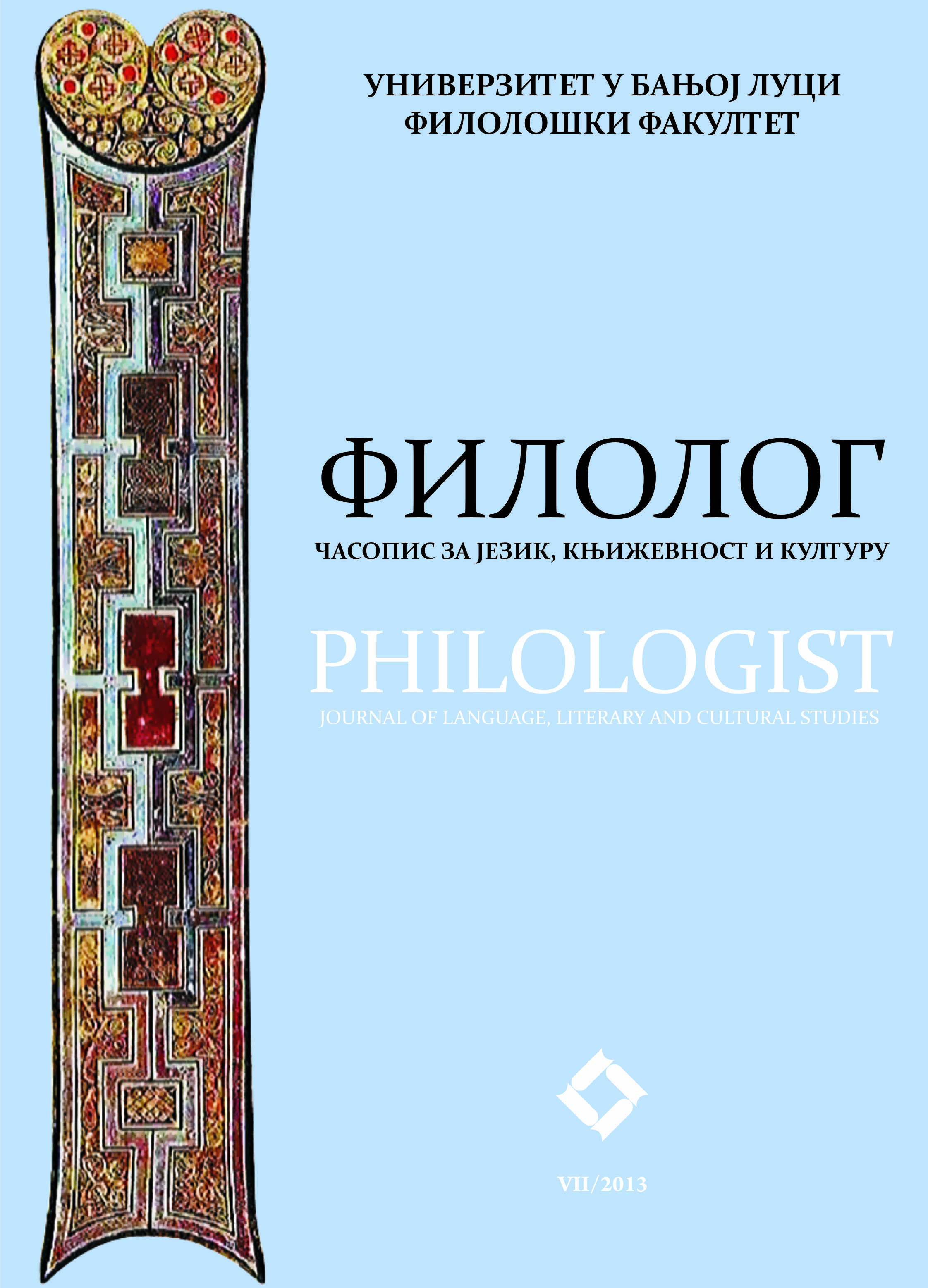
На сигурном трагу хромог Вука
Review of: Kovačević, Miloš (2012), Lingvostilistika književnog teksta, Beograd: Srpska književna zadruga.
More...We kindly inform you that, as long as the subject affiliation of our 300.000+ articles is in progress, you might get unsufficient or no results on your third level or second level search. In this case, please broaden your search criteria.

Review of: Kovačević, Miloš (2012), Lingvostilistika književnog teksta, Beograd: Srpska književna zadruga.
More...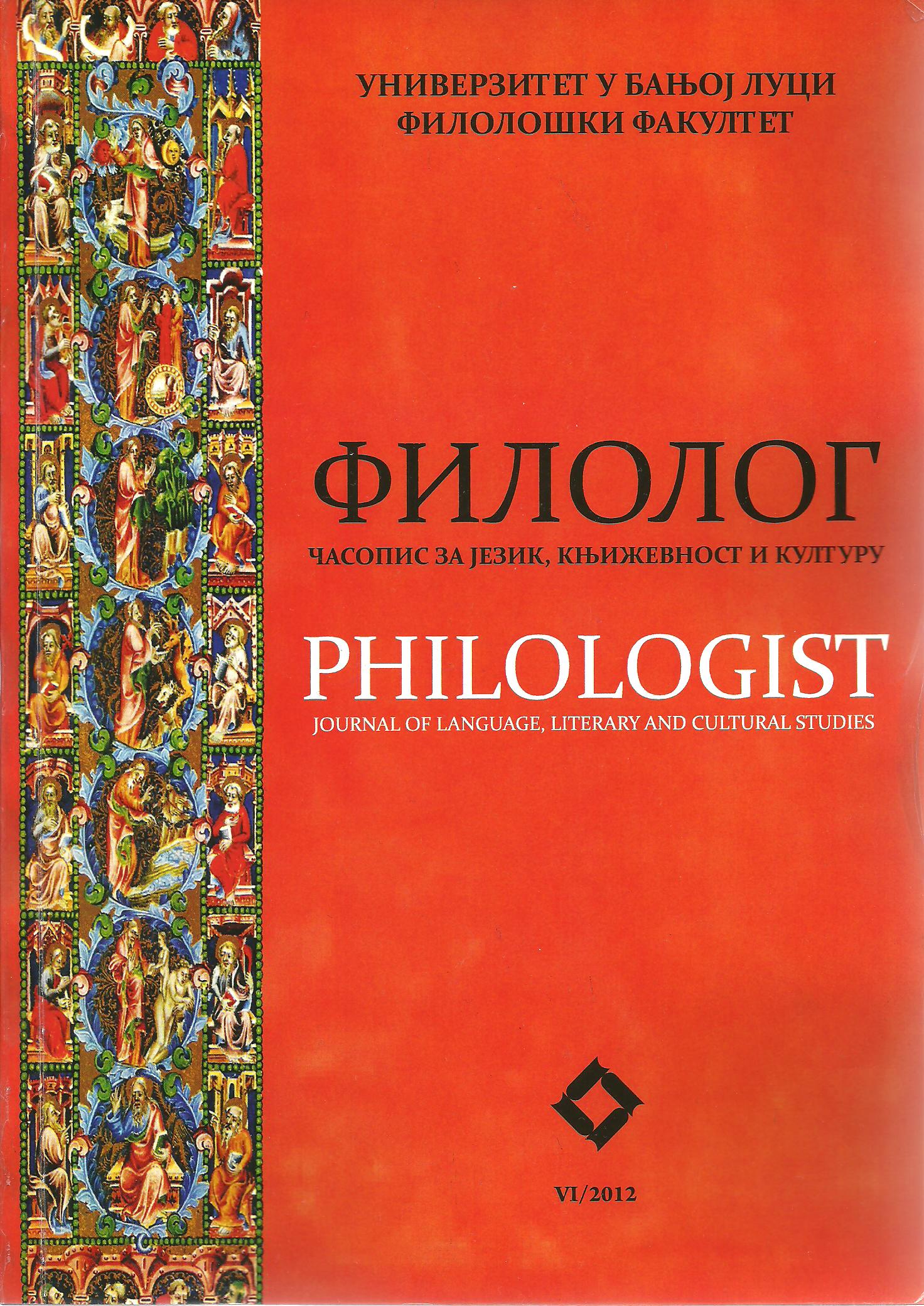
Given the fact that every language is subject to various historical trends, spiritual directions, and new social structures, one can assume it is the lexic of any given language that is influenced the most in this respect, by which contacts with other peoples and cultures play a major role. As a direct result of these processes, we witness both the emergence of new lexic and the disappearance of old forms, as well as changes in existing word sets. For that purpose, this paper analyses shifts in meaning and stylistic features of some verbs in the German and Serbian languages.
More...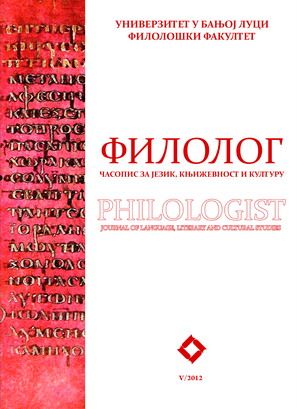
Taking as a starting point the fact that the lacuna has occupied the attention of researchers not only from the basic lexical aspect, but also from that of word-formation, morpho-syntactic, phraseologico-paroemiologic and stylistic, as well as in terms of lexicographic and translational problems created in the contact of both related and non-related languages, the author claims that the issue of proper names manifested as a lacuna also demands a thorough linguistic analysis, which is at the core of this paper dealing with the lacuna within the range of Serbian and Russian language respectively. The cultural-historical background and socio-traditional specificity of the lacuna are viewed through the prism of proper nouns in contemporary Russian language (bearing in mind the problems of transposing them into contemporary Serbian language). The analysis is done on proper nouns and toponyms only, with other noun groups being discussed in general.
More...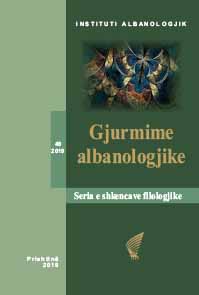
The literary work of Rexhep Qosja stands out for lexical richness. An important source of lexical enrichment of his novels is the popular language, from which he received words, expressions, and phrases of daily use, as well as dialect words. The layer of words from dialectical discourse settle down a visible place in all his novels, and comes as a lexical and stylistic enriching element. This dialectical lexical gamma includes words from various conceptual areas related to Albanian life in general, words and expressions that reflect the material and spiritual world. The dialectic lexicon in his work is used to characterize the language of the personage or the environment, as well as the language of the autor. Qosja uses various dialectical words of different lexicon-grammatical categories, the richest category are the nouns. In general, the dialectic material in Qosja's novels is from the northeastern Albanian dialects, especially from the highlands and surrounding areas, and from the rural and urban areas of Kosovo (especially Pristina). Dialect elements are used with expressive-stylistic functions and with marking functions. Through the use of this layer of lexicon, have been achieved new meaning, new colorings, special meaningful nuances ect. The author, with particular creative mastery, has synthesized certain dialectical features into the national general.
More...![Stylistyka i rytmika polska. Podręcznik dla szkoły i samouków Kazimierza Wóycickiego [1917]](/api/image/getissuecoverimage?id=picture_2020_55202.jpg)
Kazimierz Dominik Wóycicki urodził się w Warszawie w 1876 roku, jego rodzicami byli Tadeusz Wóycicki herbu Rawicz i Jadwiga Wyssogota- Zakrzewska. Zainteresowanie polską kulturą i literaturą oraz jej historią przejął zapewne od dziadka – Kazimierza Władysława Wóycickiego (1807–1879) – wydawcy, pamiętnikarza, varsavianisty, autora trzytomowego opisu cmentarza Powązkowskiego, a także uczestnika powstania listopadowego.
More...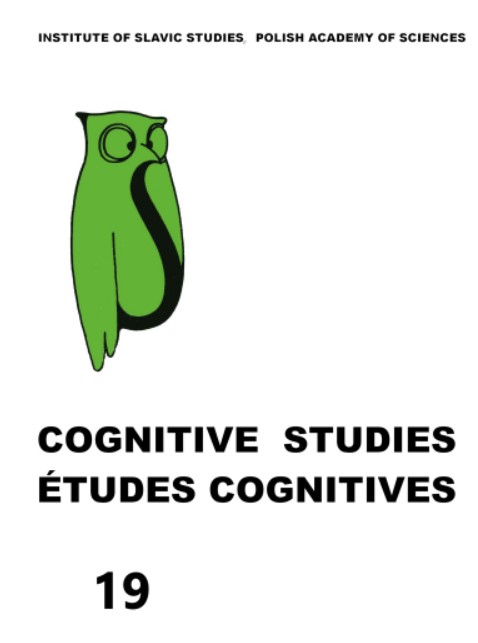
Review of: JOANNA SATOŁA-STASKOWIAK - VANINA SUMROVA, NEW FEMINITIVES IN BULGARIAN, PUBLISHED BY THE BULGARIAN ACADEMY OF SCIENCE “PROF. MARIN DRINOV”, SOFIA 2018, PP. 196.
More...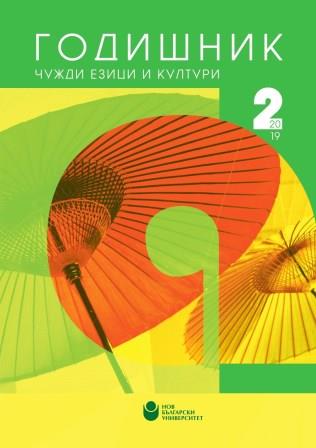
The article traces theoretical outlines of the four components of film as a text type: acoustics, visuals, verbal and non-verbal components. An exhaustive account of theories of translation is followed by analysis of Spanish television texts and their translation into Bulgarian with a view of how each code is interpreted and which compensatory mechanisms are employed to make the translation as rich as the original. The article discusses both subtitles and voice-over techniques by developing a taxonomy of the adaptations in the respective translation which should match the original technologically, temporally, spatially and linguistically.
More...
The article reveals specific features of the translation from Spanish to Bulgarian of some comic word games/ puns in the American television series Silvana sin lana, especially those based on polysemy and paronymy, neologisms and certain proper names. Based on the requirements presented in the audio-visual translation, several translation proposals are analysed, including different options for translation compensations aimed at generating the same comic impact on the Bulgarian public as the original version exerts on Spanish-speaking viewers. The results show that this objective, however complicated it may seem, in many cases is achievable, although with certain inevitable losses. Nevertheless, on other occasions the word games have practically disappeared from the target text both for purely linguistic reasons, and because of the limitations of audio-visual translation caused by the interpenetration of several codes of different kinds.
More...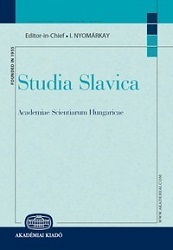
Nowadays, sports play an important role in the world, both from the pure competitive (even emulative) and political point of view. The influence of sports is also traced here at the linguistic level: many words and expressions from the field of sports penetrate the language but, on the other hand, the sphere of sports itself becomes a fertile ground for the emergence of new expressive words and idioms having different stylistic and expressive colours that can perform various pragmatic functions. In the language of sports, lexical units often acquire a new meaning related to sports; in some cases, the meanings of already existing metaphorical phraseological models are actualized. The paper is devoted to the problem of the status and description of one of the types of phraseological units, i.e. stable comparisons, which are used in the sphere of sports or sports discourse in modern Russian and Ukrainian languages. On the one hand, these units have their origins in sports slang as well as in mass media language and also come from common phraseology and other discourses. On the other hand, such units have not only a high expressive level but they are often used as picturesque and metaphorical means in other discourses, e.g. political, social, or economic. Such expressions are nowadays very popular and commonly used both in spoken language (speech) and in mass media language. Stable comparisons are, in fact, a universally figurative and expressive means of language which can be used in any situation, context, and in any pragmatic field of language use. The sphere of sports is not an exception, where such language units fulfil various functions both in the language of sports journalism (oral reportages, articles on sports, internet communication and discussions in internet forums specializing in sports) and in the speech of the athletes themselves. This paper discusses some of the most commonly used stable comparisons in the sphere of sports (i.e. sports discourse) both in Russian and Ukrainian languages. The metaphorical models of such units are examined from the point of view of Russian–Ukrainian language convergence. It can be stated that the language of modern Russian sports journalism can be seen today to a certain extent as a possible (or potential) prototype for the development of Ukrainian-language sports discourse. Generally speaking, live contacts in interdiscourse sports communication, including the language of sports journalism, however, are still ongoing and active language interaction at the level of vocabulary and phraseology remains one of the most effective means of enriching the vocabulary of the national language.
More...
This article presents a comparative analysis of Serbian and Spanish prov- erbs and sayings containing the lexeme heart, in order to discover and compare how these two cultural and linguistic communities experience and interpret the world that surrounds them. The aim of this paper is to extract proverbs containing the lexeme heart and then to classify them using a qualitative and descriptive method of analysis according to the ideas they contain when defining and portraying the concept of heart. Accordingly, the research questions in this paper are: In what way(s) do Serbian and Spanish proverbs and sayings containing the lexeme heart conceptualize this concept and, therefore, how is this organ represented in the cultures and languages of these two communities? What similarities and differences do Serbian and Spanish proverbs and sayings portray at the level of ideas? The analysis has shown that both Serbian and Spanish proverbs illustrate the same or similar ideas, revealing similarities rather than differences in the ways of understanding and conceptualizing the concept of heart. This does not come as a surprise, bearing in mind that these two communities share the Indo-European language heritage and belong to similar socio-historical and cultural contexts. The heart is perceived as the most important organ in the human body, crucial for its functioning. At the same time, it is the central place for one’s feel- ings and therefore a vital element in the functioning of one’s emotional life. Love is perceived as the most important feeling that causes happiness: a heart that is happy is a heart filled with love, and it affects people and their health positively. The heart also helps us to cope with troubles and overcome adverse life circumstances. It has the need and desire to approach the object of love: if the object of love is not physically present, love weakens, and the emotional bond between two people can be interrupted. When it comes to differences, Spanish language offers more proverbs and sayings, while Serbian language lacks examples in which the concept of heart is connected with the body temperature (heat and cold), food, intuition, honesty and loyalty.
More...
In der vorliegenden Arbeit werden Adjektive als Farbbezeichnungen mit substantivischem Erstglied im Deustchen untersucht, mit dem Ziel ihre Äquivalente im Serbischen festzustellen und systematisch zu beschreiben. Diese Klasse von Adjektiven, in der Literatur als Vergleichsbildungen bekannt, stellt ein hochproduktives Wortbildungsmuster im Deutschen, wobei Erstglieder die semantische Funktion „Vergleichsgröße” spielen. Mit Hilfe von dem als Nomen realisierten Erstglied werden die Farbnuancen durch die Vergleichs- bildung sprachlich verbalisiert. Die durchgeführte Korpusanalyse hat zwei Unterklassen von Adjektiven erbracht, deren Struktur folgendermaßen dargestellt werden kann Typ 1. Nomen+ Adjektiv und Typ 2. Nomen + Konfix -farben. Der Schwerpunkt der Untersuchung liegt hauptsächlich in der Analyse der Äquivalenzrelationen zwischen den sprachlichen Einheiten des Deutschen als Ausgangssprache und des Serbischen als Zielsprache.
More...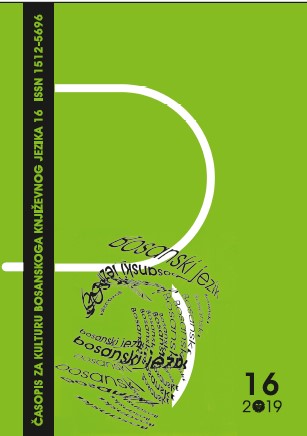
The paper analyses the features and elements of the poetics of the anti-war novel, their close connection with the “category of war letters” and the “poetics of testimony” on the example of the novel Grad u cvatu magnolije by Mehmed Pargan. The focus of the discussion is on the relationship between history and fiction, through which an attempt is made to clarify the connection between the ethics of a literary work and the aesthetics of historiography in the context of finding (literary) truth and cultivating collective memory. The paper points out the principle of composing and structuring the mentioned narrative, which is based on, as we defined it, divided poetics, poetics that is realized between the ethics of historiography and the aesthetics of postmodern fiction.
More...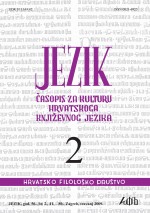
This paper deals with the relation between the 19th century standard Croatian language and the dialect, particularly with the style-creating usage of dialect in the linguistic characterization of persons.
More...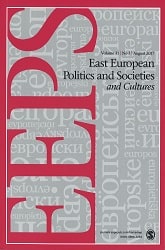
Bruno Schulz and T. S. Eliot both saw the production of meaning in art as a process deeply laden with the construction and conjuring of mythologies. Despite the religion of the Now and the Future, by which many would characterize Modernism, the recurring gesture of primitivism signals a concomitant yearning for origins. In this essay, I would like to explore the theoretical positions on mythology and meaning in Schulz and Eliot, and consider how they play out in the two authors' artistic work. [...]
More...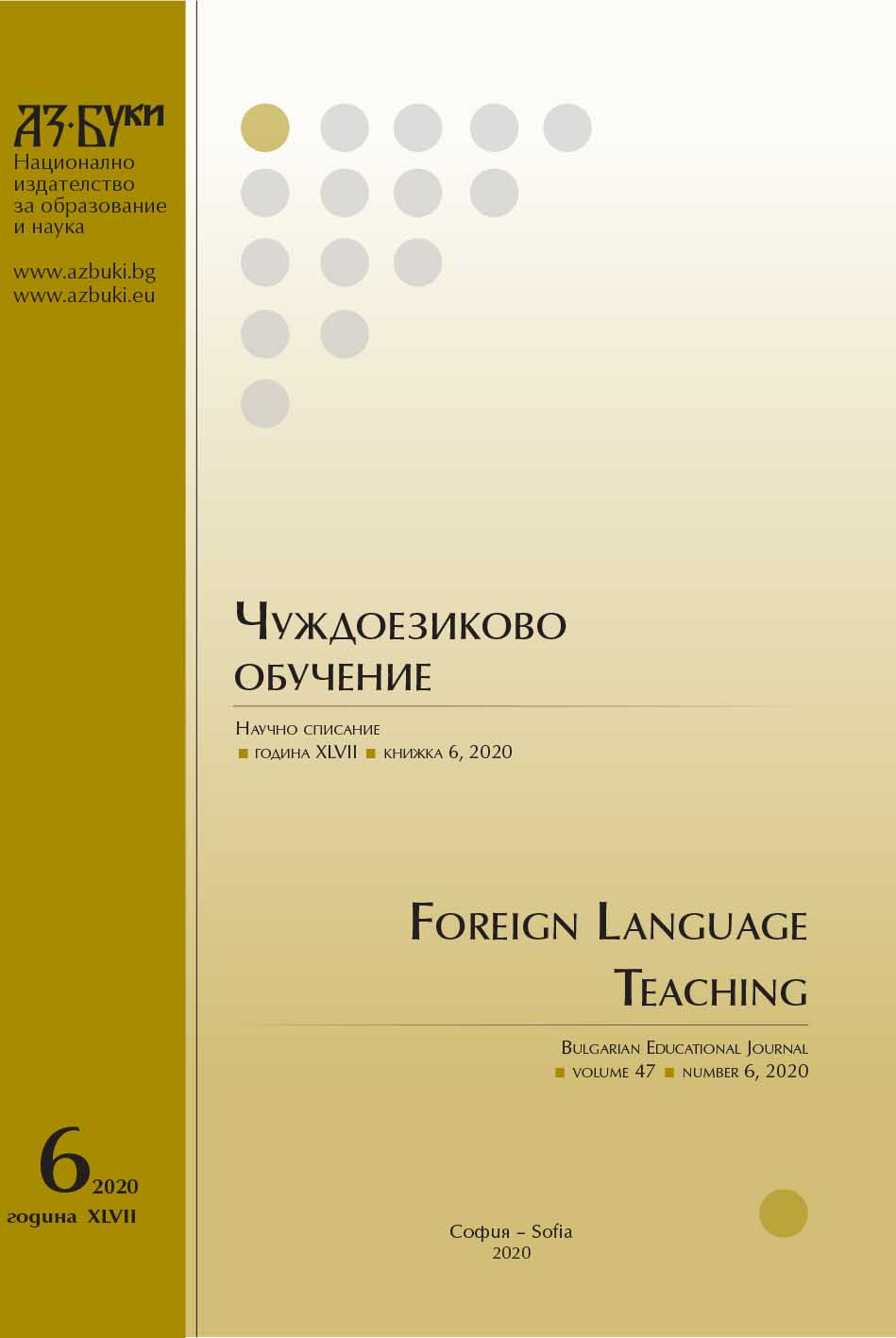
The article argues the need for systematization and complex description of formally matching interlanguage correspondences of Slavic and non-Slavic origin, in which at least one lexical unit belongs to the legal terminology of the Russian or Bulgarian language. Identified are the main theoretical and methodological problematic issues associated with the study of this phenomenon, proposed are ways for overcoming them - also using automated methods of processing natural language. The analysis of the formally coincident units, identified in the criminal legislation of Russia and Bulgaria, allows drawing preliminary conclusions about the types of interlanguage parallels in Russian and Bulgarian legal terminology and outlining prospects for their study in future.
More...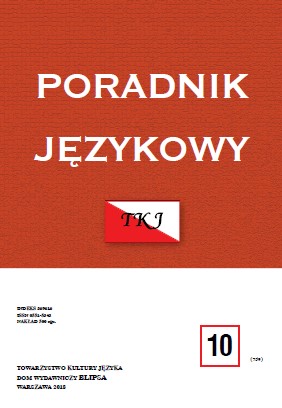
This paper presents the results of stylistic and semantic research on Middle Polish vocabulary represented by 300 nominal names excerpted from selected works by Wacław Potocki (1621–1696). The insufficient number of studies dedicated to stylistics of the 17th-century lexis encouraged the author to carry out the analyses. Based on the works by A. Markowski and D. Buttler, which describe methods of identifying common inflection vocabulary of the contemporary Polish, the author makes an attempt to apply similar examinations to old lexis. By means of vocabulary research and her own analyses, she separates, among others, sets of expressive, specialist and erudite vocabulary from the collected material, which in turn permits her to distinguish a group of neutral, stylistically unmarked, lexis from among 300 nouns. The employment of the structuralist method of semantic fields for Middle Polish common words enables the development of a thematic grid representing the distribution of the studied units in individual classes of real meanings. A comparative analysis of the semantic layer of the common vocabulary in two distant historical phases confirms a high stability and universal anthropocentrism of this part of the lexical resource of Polish.
More...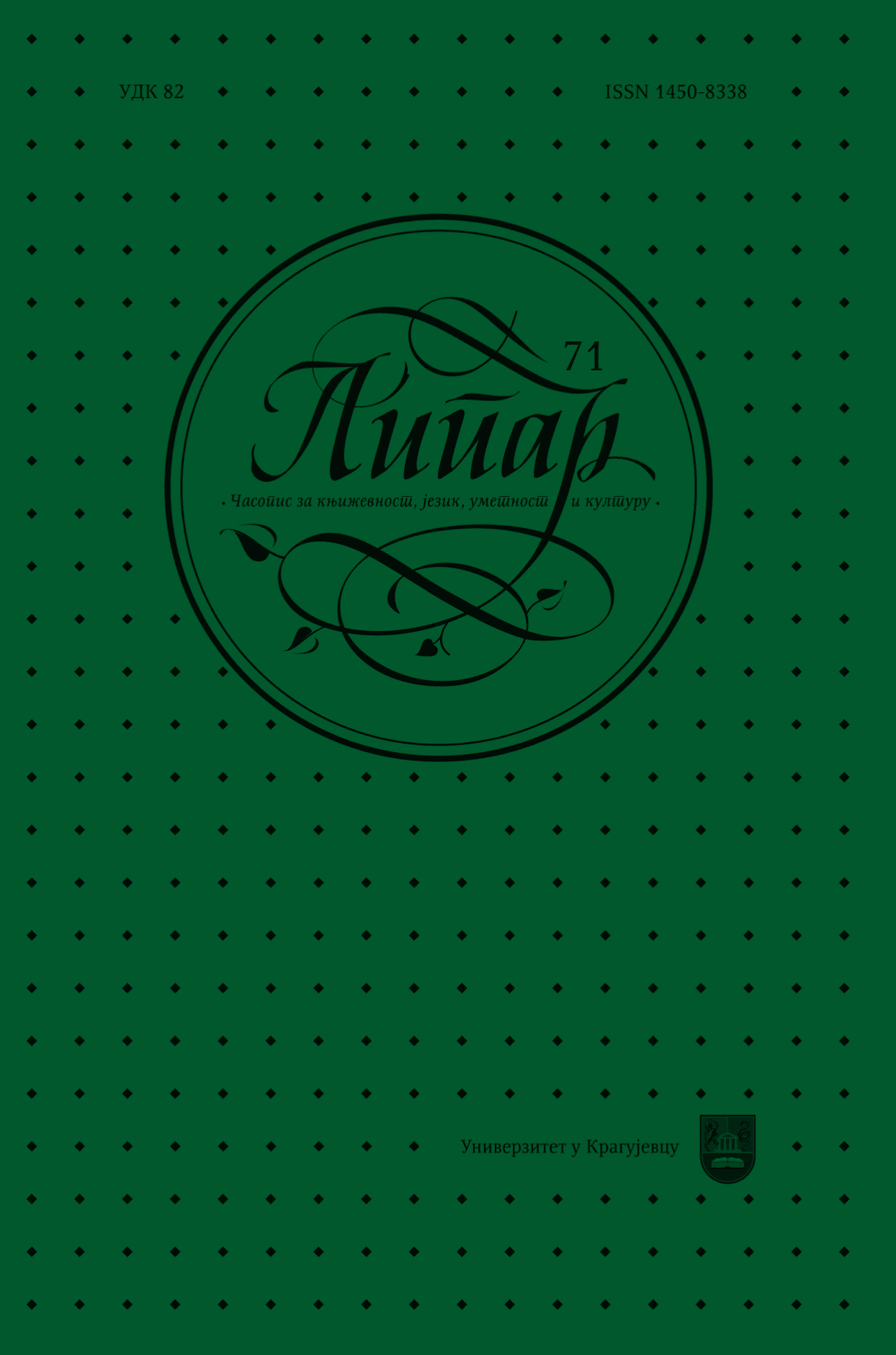
Le sujet de l’étude est l’analyse des onomatopées dans la bande dessinée belge Les Schtroumpfs de l’auteur Pierre Culliford, ainsi que la recherche de leurs équivalents en serbe. Le corpus de cet article est basé sur les quatre volumes de la bande dessinée susmentionnée du caricaturiste Pejo, dans leur version originale en français et en serbe, traduite par Vladimir D. Janković. Dans l’article on examine les similitudes et les différences entre les onomatopées dans les deux langues, en mettant l’accent sur leur caractère graphique, ce qui permet une analyse sur le plan phonostyliste et graphostyliste par le biais d’une analyse contrastive. Les résultats de la recherche montrent qu’il est possible de traduire des onomatopées de la langue source dans la langue cible par l’opération du transcodage, mais qu’il faut tenir en compte la liberté relative du traducteur dans la stylisation des onomatopées
More...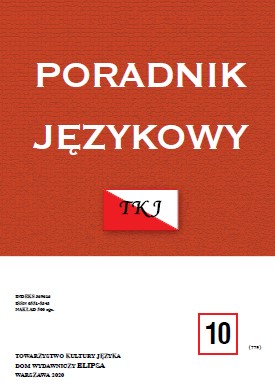
The union concluded at the Sejm meeting held in Lublin in 1569 established common institutions of the Kingdom of Poland and the Grand Duchy of Lithuania, thus creating the Polish-Lithuanian Commonwealth, which survived until 1795. Apart from the ruler elected jointly by the nobility of both countries, it established the common Sejm, foreign and defence policies, and the common coin. The army, treasury, legal systems, administration, and judiciary remained separate. From the philological point of view, the following markers are substantial for characterising the Union of Lublin act: the Polish language of the text and its stylistic affinity, diversity of the forms of the names of the document signatories, text composition and its official and rhetoric style markers determining its informative and persuasive functions.
More...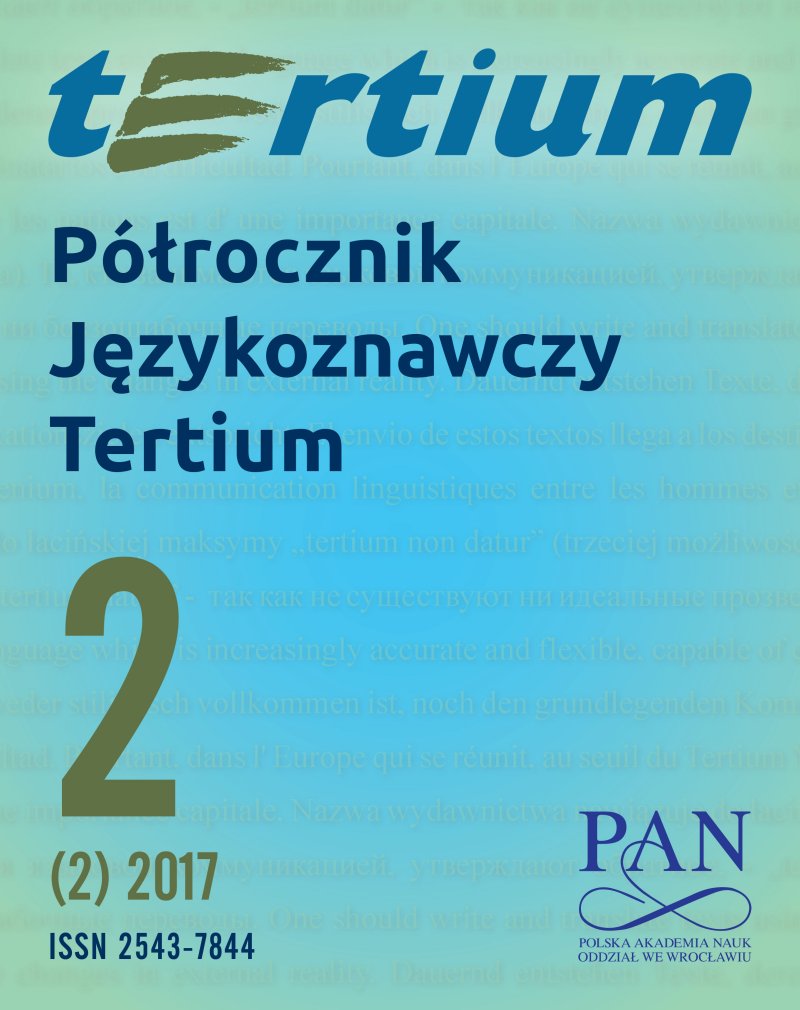
Artykuł podejmuje temat językowych reprezentacji kulturowej odmienności w literaturze szwedzkiej, przedstawiającej środowiska imigranckie i/lub rozwarstwione klasowo. Język, zarówno protagonistów jak i narracji, jest konstruktem literackim, który eksponuje jedynie niektóre elementy językowe (głównie leksykalne) jako relewantne dla osiągnięcia pragmatycznego celu – efektu obcości. Przedmiotem artykułu jest analiza stylistyczna zastosowanych środków oraz strategie tłumaczy zmierzające do uzyskania ekwiwalencji funkcjonalnej. // The article takes up the problem of linguistic representations of cultural otherness in Swedish literature featuring immigrant and/or class-stratified environments. The language, both of the protagonists as well as the narration, is a literary construct exposing only those linguistic elements (mainly lexical ones) which are relevant for achieving a pragmatic purpose – the effect of otherness. The article presents a stylistic analysis of the means of expression employed together with translators' strategies aimed at achieving a functional equivalence.
More...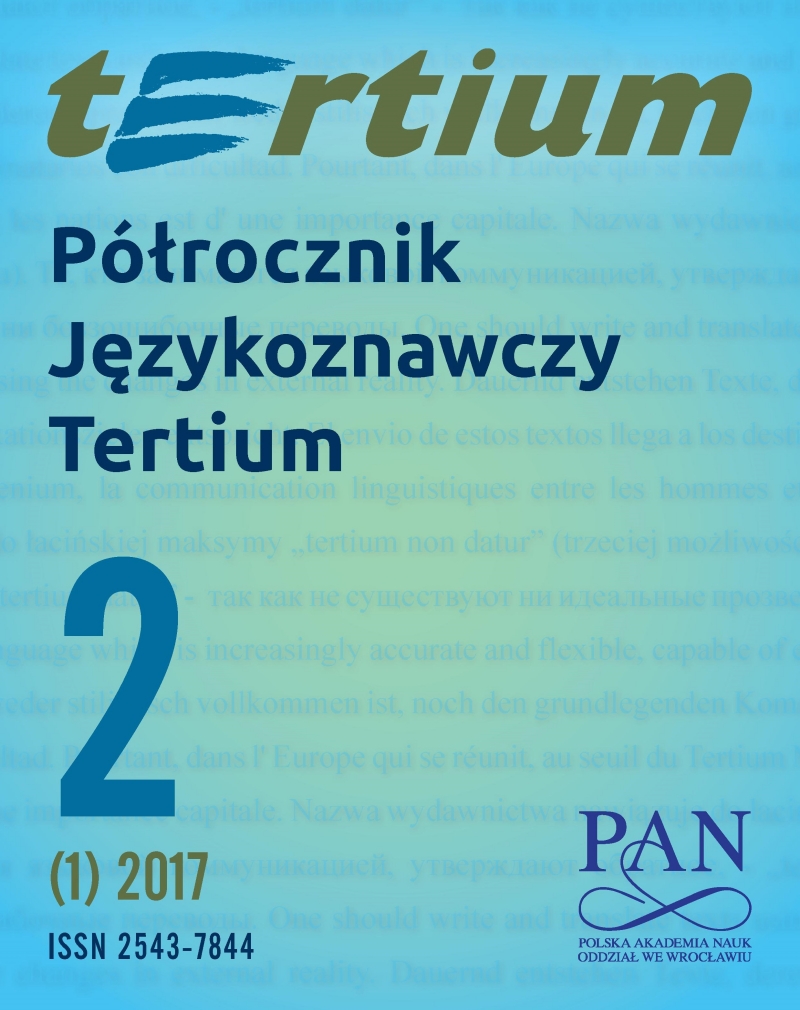
Przyjmując za punkt wyjścia istnienie stylów i gatunków tekstu, opisanych przez A. Awdiejewai G. Habrajską (2006), autorka próbuje określić, jakie cechy stylistyczne (ewentualnie teżgatunkowe) mają komentarze internetowe na przykładzie komentarzy zamieszczanych naportalu Onet.pl. Obserwacja wykazuje, że badane teksty mają przede wszystkim potocznewykładniki językowe, ale nie brak im też wykładników publicystycznych. Można zatem mówićo stylu mieszanym. // Assuming text styles and genres as described in Awdiejew and Habrajska (2006), in this paperI try to determine which stylistic (genre) features can be proposed for internet commentaries,basing on those placed in Onet.pl. The study shows that the analyzed texts have mostlytypological indicators of colloquial style, but they also possess typological indicators ofjournalistic genres. We can thus propose the existence of mixed style.
More...